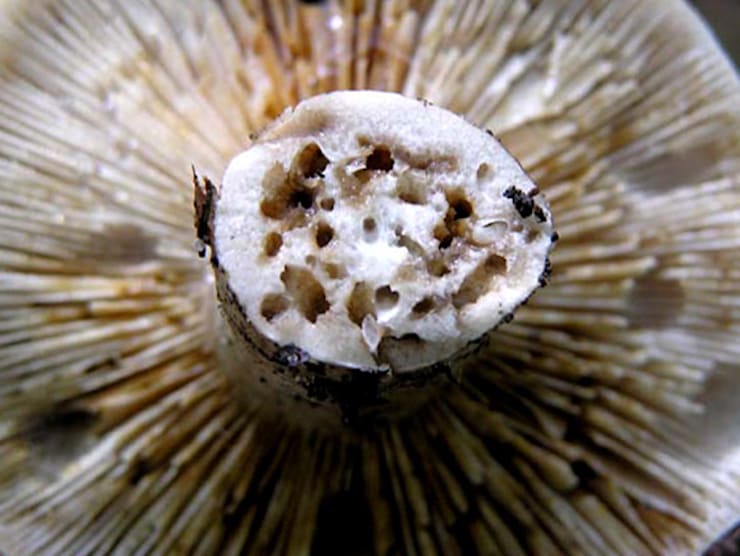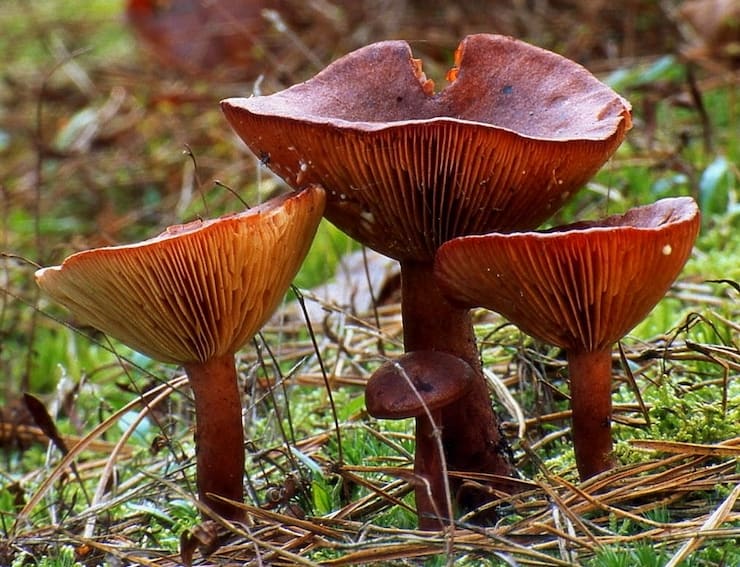Picking mushrooms is a favorite pastime for many. The forest walk itself is healthy in terms of health, and the basis for preparing delicious dishes can be easily prepared. Of course, it is necessary to distinguish between edible and inedible mushrooms in order to avoid poisoning. But even mushrooms that are edible can be spoiled, wormy. What mushrooms are not subject to this scourge?
BY TOPIC: 50 best optical illusions.
Frankly, the term “wormy” is not quite correct in relation to mushrooms. After all, it is not worms that settle in them, but insect larvae: mushroom mosquitoes or flies. Only these two families of living creatures can lay eggs in the soil next to the fungus or on its fruiting body. As soon as a larva is born from them, it immediately begins to eat the nutritious pulp and grow due to this.

Can’t mushrooms withstand such external influences in any way? There are species that are not afraid of larvae. And experienced mushroom pickers know what to look for. For example, a worm is never a chanterelle and a blackberry.

Chanterelle

hedgehog
The fact is that in these mushrooms there is such a substance as the polysaccharide chinomannose. It has an extremely negative effect on the nervous system of insects and even dissolves the shell of their eggs, in fact, destroying them. But for humans, the polysaccharide chinomannose is absolutely safe.
Also, you will never find larvae in the red milkweed, also known as bittersweet. This fungus has its own protection – caustic milky juice. Its parasites cannot stand it, however, this taste also seems unpleasant to a person. Bitters are considered edible, but the process of their preparation is very painstaking – the mushrooms will have to be soaked and boiled for a long time.

bittersweet
There is a rather popular opinion among novice mushroom pickers that poisonous mushrooms cannot be wormy. Here we run into a misunderstanding. This man began to divide mushrooms into poisonous, inedible, conditionally edible and edible. Such categories have been formed over hundreds of years of using the product, they are needed to understand the possibilities of economic use of mushrooms. For example, fly agarics unsuitable for human consumption are quite suitable for moose. So this “poisonousness” is a very relative concept, insects do not know anything about it. Most often, substances of fungi dangerous to humans do not harm insects in any way. Moreover, it is even beneficial for fungi to have their spores spread by insects. So wormy fly agarics or pale grebes are very common.
It is almost impossible to find mushrooms affected by larvae on store shelves. The fact is that the canned product undergoes a special heat treatment that destroys parasites. And fresh mushrooms are grown according to established standards. For example, it is possible to successfully cultivate champignons. But this fungus and insect larvae are very fond of, striking not only in the natural environment, but also in the artificial one. As a result, special measures have to be taken when growing champignons. And if the technology is followed, then the mushrooms will hit the shelves clean and undamaged.
Oyster mushrooms are also sold fresh in stores, but the situation is different with it. This mushroom belongs to the group of carnivores. It turns out there are some! If the oyster mushroom ceases to have enough nutrients, it will begin to secrete special substances, to which the smallest soil worms are drawn.

oyster mushroom
These invertebrates stick to the underground part of the fungus, to its hyphae – and that’s all it needs! Oyster mushroom digests “predators”, making them its prey. That is why this mushroom is rarely wormy. In addition, the industrial cultivation of oyster mushrooms also provides for a number of standards, which practically makes it impossible to damage the fungus.
See also:
.
The post Types of mushrooms that are not wormy appeared first on Gamingsym.
